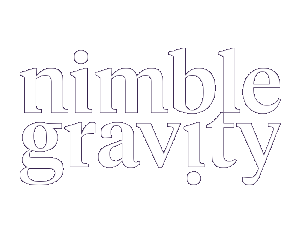Building software that could deal with high levels of ambiguity is hard, but complexity has been dramatically reduced with the introduction of LLMs. Five years ago, if a customer asked us to create a voice-enabled mobile app where users could ask questions and receive natural, friendly responses drawn from a specific knowledge base, I would have quoted a massive project, reached out to multiple partners for assistance, and marked it as highly risky.
Everything has changed now. The barriers to creating “intelligent”, autonomous software have fallen dramatically, thanks to advancements in AI technologies from companies like OpenAI, Google, AWS, and Microsoft. What once required extensive custom development can now be built in weeks instead of years using existing building blocks.

The New Reality of Autonomous SaaS
Autonomous SaaS platforms represent the next evolution in software. Rather than static tools that simply execute predefined functions, these systems adapt, learn, and solve problems with minimal human intervention. But the real value comes from systems that can continuously learn and improve themselves.
The practical implications are significant. At Nimble Gravity, we recently built a voice assistant app for a client whose knowledge base was difficult for many users to understand and search. Using OpenAI's real-time API, we created a solution that allows users to ask questions naturally and receive intelligent responses. The entire project required just two developers and took only eight weeks to complete.
From Static Software to Systems That Learn
Traditional SaaS platforms follow a predictable pattern:
- Product teams define features
- Developers build them
- Users adapt their workflows to the software's capabilities
Autonomous SaaS reverses this dynamic:
- Users express their needs in natural language
- The system understands those needs and looks for the best tool to solve them
- The platform continuously improves through usage patterns
Why This Matters for Your Business Strategy
Autonomous SaaS fundamentally changes the calculus of software investment in three crucial ways:
Reduced time-to-value: Our client's voice app went from concept to production in eight weeks. Five years ago, this same project would have taken 12-18 months.
Lower technical barriers: The heavy lifting of the project wasn't creating AI but designing the UX, building the API layer to access the knowledge base, and creating prompts to guide the AI's behavior.
Cost-effectiveness: The operational costs are reasonable too - around $0.40 per two minutes of audio using GPT4o-mini, making these solutions accessible even with limited budgets.
The Architecture Behind Autonomous SaaS
Building truly autonomous SaaS requires thinking differently about architecture. Much like how we saw with mobile apps, appearances can be deceiving. A polished interface means nothing if the system collapses under user demand.
Successful autonomous SaaS platforms require:
Flexible foundation: Systems must be designed to adapt and grow with usage patterns, not rigid predefined pathways.
Strong observability: Without visibility into how AI components are performing, you're flying blind. Tools like Datadog or New Relic become even more critical when AI is involved.
Robust caching strategies: AI processing can be resource-intensive; intelligent caching reduces costs and improves responsiveness.
Asynchronous processing: User experiences remain smooth while complex processing happens in the background.
Common Pitfalls When Building Autonomous Systems
Many organizations rush into AI-powered SaaS development without considering the full lifecycle. This leads to familiar problems:
The MVP trap: Just as with traditional SaaS, companies often build an impressive AI-powered MVP but neglect the architecture needed for longevity and scale. When success comes, the system breaks under pressure.
Neglecting maintenance: Technical debt accumulates faster with autonomous systems because they're constantly learning. Regular maintenance isn't optional - it's essential. Nowadays, a new LLM is released each quarter.
Over-promising AI capabilities: The most successful autonomous SaaS products focus on solving specific problems well rather than attempting to be universal AI assistants.
Questions for Leaders Considering Autonomous SaaS
Before embarking on an autonomous SaaS project, consider:
- Which specific user pain points would benefit most from an AI-powered solution?
- Do you have the right observability infrastructure to monitor AI performance?
- Is your organization prepared for the different development cycle of autonomous systems?
- Is your user base ready to interact with AI agents?
Moving Forward: Strategic Implementation Steps
To build autonomous SaaS platforms that truly learn and adapt:
- Start with focused use cases - Identify specific scenarios where autonomous capabilities deliver clear value.
- Design for resilience from day one - Build systems that can handle unexpected inputs and usage patterns. Implement proper guardrails.
- Implement comprehensive observability - Use tools like Datadog, New Relic, or Grafana to track performance across the entire stack.
- Plan for regular architectural reviews - Schedule periodic technology upgrades before they become urgent. As we often tell startups, waiting 3-5 years between major upgrades guarantees painful migrations.
- Security first - Large language models can be tricked into leaking data if not properly protected.
The Practical Future of Autonomous SaaS
Autonomous SaaS platforms represent a fundamental shift in how we build and use software. You can start by adding AI features to existing products but reimagining how software can adapt and grow with minimal human intervention would drive better outcomes.
The technology to build these systems cost-effectively is already accessible. The challenge now isn't technical feasibility but rethinking our approach to software design, architecture, and maintenance.
For business leaders, the opportunity is clear: autonomous SaaS can deliver capabilities that were previously impractical while dramatically reducing development time. But success requires more than just adding AI - it demands thoughtful design, architecture, robust observability, and a commitment to continuous improvement.




